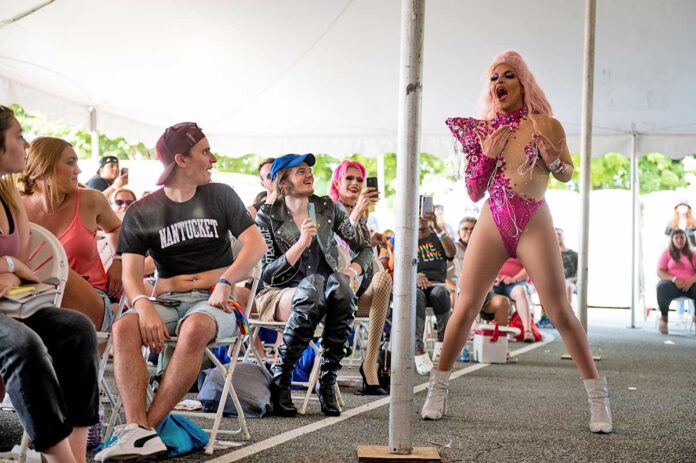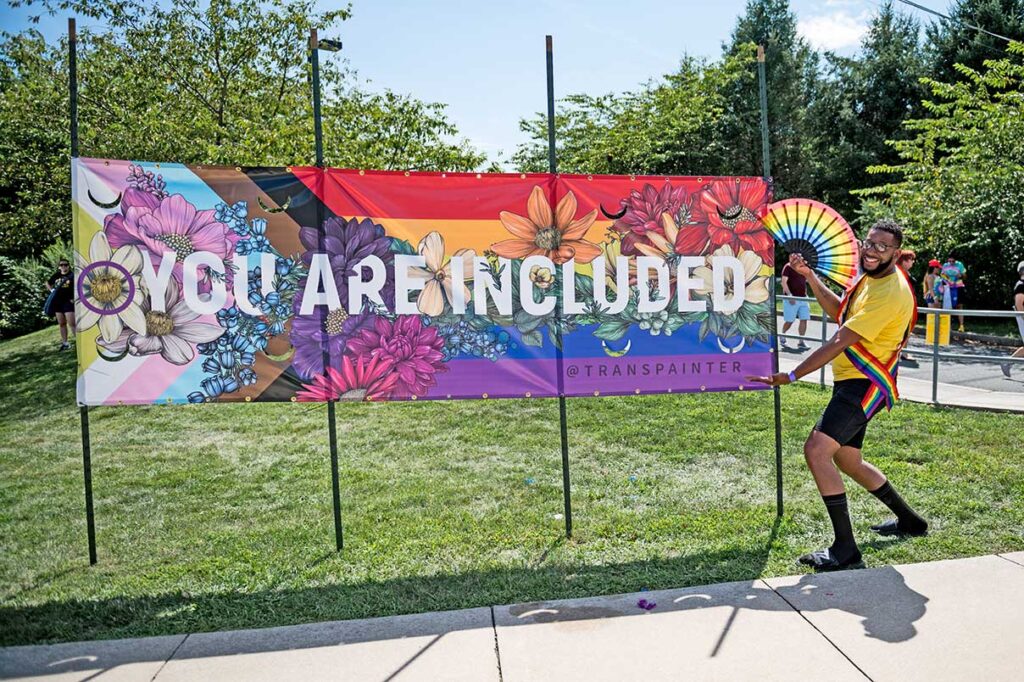
In the early afternoon of August 15, a line of over a thousand people stretched around the block outside the Jewish Community Center in Allentown.
They were all waiting to get into Lehigh Valley Pride — an annual celebration of the LGBTQ+ community in the Lehigh Valley area. After last year’s event was held virtually due to coronavirus restrictions, the event welcomed back thousands of patrons in person for its 28th annual festival.
“We believe it was one of the highest turnouts we’ve ever had,” said Adrian Shanker, the executive director for the Bradbury-Sullivan LGBT Community Center, which hosts the event. “We heard that consistently from people who were there, really raving about how the event felt incredibly vibrant.”
This year’s event kicked off with an opening ceremony featuring a performance by the Philadelphia Freedom Marching Band, along with speeches given by local politicians including Pennsylvania State Senator Pat Browne and Allentown Mayor Ray O’Connell. Opening remarks were also given by this year’s grand marshalls — Congresswoman Susan Wild and Black Lives Matter Lehigh Valley founder Justan Parker Fields.
Themed ‘You Are Included,’ the event featured 125 artists, nonprofits, faith organizations, civil rights groups, refreshment vendors and various other entities. It also included youth activities, sober social spaces and free health testing — as well as appearances by talents like singer-songwriter Regina Sayles and “RuPaul’s Drag Race” star Ariel Versace.
The event not only drew huge crowds of locals, but many more Philadelphians also traveled down this year to take part in the festivities, Shanker added.
“It was just an amazing experience to see our community united… not only being safe from the pandemic, but also being able to celebrate in person together,” said Ariel Torres, pride programs manager for the Bradbury-Sullivan Center. “We dedicated a lot of our time, effort, sweat, tears into making this something our community could enjoy, and we couldn’t be happier with the outcome.”

This year’s event was much harder to plan, though, he said. While planning usually stretches over the course of the entire year, the team made the decision to hold the event in person just ten weeks beforehand due to the lifting of many coronavirus restrictions.
“What it took was just dedication and extra hours and just making sure that we were crossing our T’s and dotting our I’s,” Torres said. “Our community really had some needs that needed to be met that could only be delivered by us having this in-person festival… So we made sure it was a top priority for us.”
Along with having to make last-minute reservations and work much more quickly, the team also had conversations with public health officials to make sure the event was as safe as possible — from providing pocket-sized hand sanitizers and masks to even having a booth set up for patrons to receive COVID-19 vaccinations.
Regardless of the extra efforts, both Shanker and Torres said the team knew that it was important for the community to physically gather together after experiencing the effects of the pandemic.
“The experiences of social isolation and loneliness during COVID were really exasperated in the LGBTQ+ community,” Shanker added. “Our community really needed the opportunity to come together and celebrate pride this year.”
Prioritizing community needs and seeking input have always been important to making Lehigh Valley Pride more inclusive year after year, Torres and Shanker said.
For example, the festival has historically not included police presence — instead using an outside agency.
“Police presence does not make everyone in our community feel safe,” Shanker said. “It in fact makes some in our community feel less safe.”
In 2018, the festival also began to include new additions for patrons with disabilities like sign language interpretation, and in 2019, a sober space was added for those who wanted a substance-free zone to convene. This year, after receiving input to put more activities in the sober space, organizers added lawn games for attendees to enjoy.
Also new this year was the replacement of the usual balloon display used for photo-ops with a mural painted by Rae Senarighi, a transgender non-binary artist. The organization also acted on community input by opting to hold an interfaith service prior to the start of the festival instead of separate religious services.
For next year, Torres and Shanker said, the Bradbury-Sullivan Center plans to continue to improve the celebration by seeking even more feedback from past attendees — hopefully making the event even more successful.
“What we’re trying to do is build on the success from the previous festival to make the next festival even better for our community,” Shanker said. “Even more values driven, even more vibrant, even more exciting, even more prideful.”